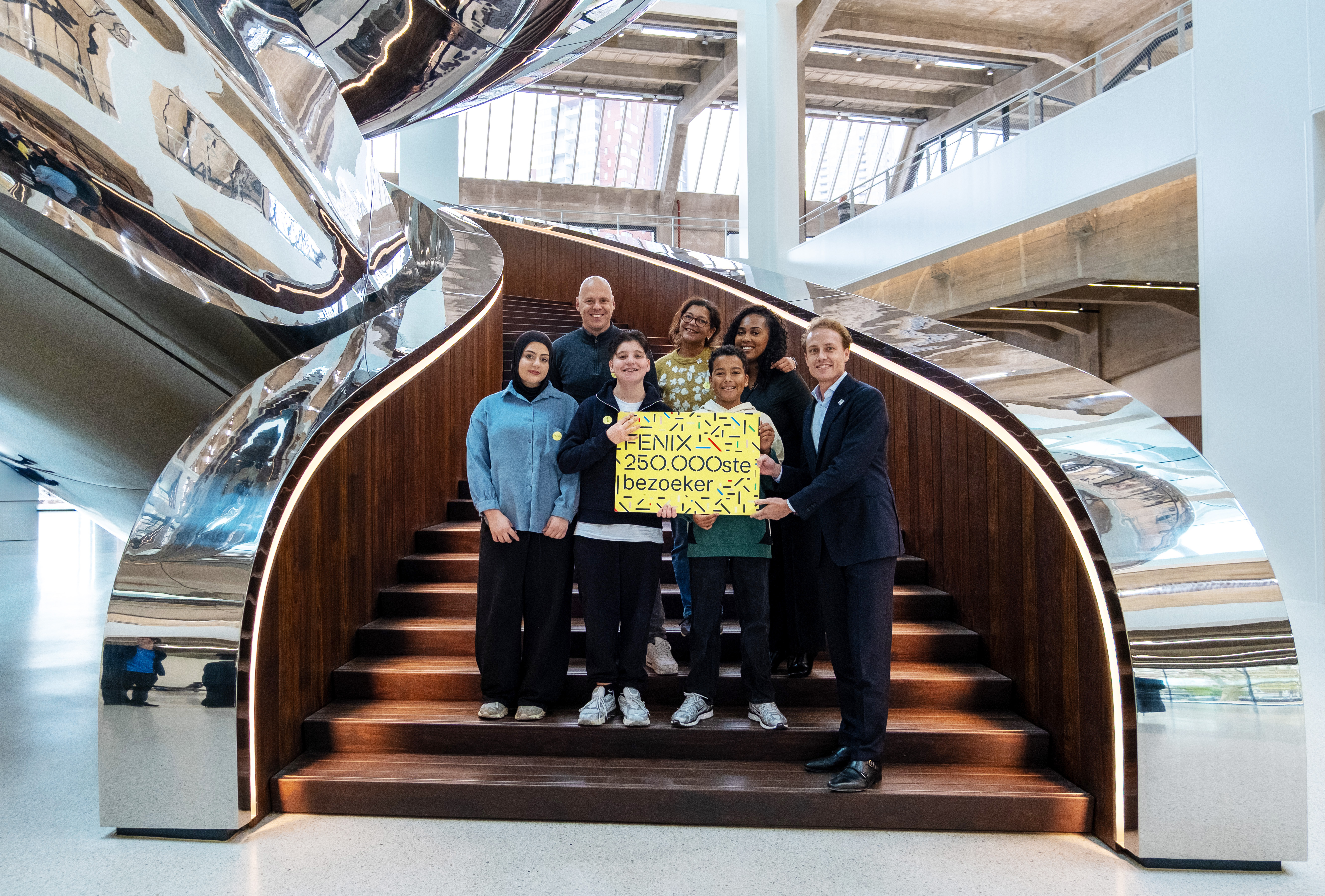Newly Discovered Portrait of Erasmus Goes to Fenix Art Museum
Painting by Hans Holbein becomes one of the most important works at new migration-focused art museum

Hans Holbein the Younger (1497/98 - 1543), Portrait of Desiderius Erasmus, circa 1532, Collection Fenix
Fenix, a new art museum in Rotterdam focusing on migration, has acquired a hitherto unknown portrait of Desiderius Erasmus. The modest panel (18 x 14 cm) depicts the great Dutch humanist, theologian and philosopher. It was painted in the workshop of Hans Holbein the Younger and turned up in late 2022 at a Christie’s auction in London. The painting will be one of Fenix’s most important pieces and can be viewed from 16 May, when the museum opens its doors to the public.
Citizen of the world
“I am a citizen of the world, at home everywhere, or rather, a stranger to all,” wrote Erasmus (1466–1536) in a letter to his fellow theologian Zwingli. Erasmus demonstrated the truth of this statement throughout his life, travelling all over the European continent from Rotterdam and Deventer to Paris, Louvain, London, Lyon and Italy, with stops in Turin, Perugia, Florence, Bologna, Rome and Naples. Later in life he spent more time in the city of Basel in Switzerland, where he was also buried. It is likely that this is where Erasmus met the painter Hans Holbein the Younger (1497/98–1543), for whom he posed repeatedly.
Undiscovered work
Holbein painted three portraits of the Rotterdam humanist in 1523, currently to be found in the collections of the Louvre, the National Gallery in London and Kunstmuseum Basel. Around 1530, Holbein’s workshop produced another group of portraits, slightly smaller in size. The unknown work that cropped up at the London auction is from this second series. Fenix had the Mauritshuis conduct technical research and also had the painting examined by various specialists such as Dr Bodo Brinkmann, curator at Kunstmuseum Basel and an expert on Holbein. All these experts confirmed both the panel’s age and the artist.
The painting was previously owned by a Dutch family, in whose possession it had been since the late 19th century. Of Dutch museums, only the Mauritshuis is fortunate enough to have two undisputed works by Hans Holbein the Younger in its collection. This portrait of Erasmus is the third. Both the Rijksmuseum and the Mauritshuis do have other Erasmus portraits which were previously attributed to Holbein. Since 2013, Museum Boijmans van Beuningen has had a small portrait of Erasmus by Lucas Cranach that was inspired by Holbein.
Anne Kremers, Fenix’s director: ''Erasmus is the most famous Rotterdammer and migrant par excellence. As the celebrity scientist of his time, he travelled all over Europe. By his motto “the world is my homeland”, Fenix asks the question: does that also apply to you?'' ‘Uitgerekend Rotterdams beroemdste zoon is de migrant bij uitstek. Als de celebrity wetenschapper van zijn tijd bereist hij heel Europa. Zijn “Quaevis terra patria”, oftewel heel de wereld is mijn vaderland, had het motto van Fenix kunnen zijn’.
Erasmus
Desiderius Erasmus Roterodamus was the celebrity academic of his day. He was famous for his philosophical and theological publications, which enjoyed rapid distribution and a widespread readership. Although Erasmus himself considered the written word superior to visual imagery, portraits of him graced studies and royal residences all over Europe. His media presence at the time was unrivalled, both visually and in writing. He maintained an extensive network of friends and acquaintances by writing huge numbers of letters, over three thousand of which remain.
Holbein
Similarly to Erasmus, Hans Holbein the Younger (1497/98–1543) travelled around Europa and had a very successful career, finally settling at the court of Henry VIII in England. Here he painted portraits of King Henry himself, two of his wives – Jane Seymour and Anne of Cleves – and various courtiers. Holbein is considered one of the finest portraitists of the 16th century and while his body of work is small, it can be found in the collections of great museums worldwide.
About Fenix
Fenix, Rotterdam’s new art museum on the theme of migration, opens its doors to the public on 16 May 2025. Fenix is located in a restored historic warehouse, which has been transformed in a radical design by Ma Yansong of MAD Architects, the internationally acclaimed Beijing-based architecture practice. Visitors will immediately see its architectural masterpiece, the Tornado, an organic, dynamic structure evocative of rising air. This double-helix staircase climbs from the ground floor and flows up and out of the rooftop onto a viewing platform hovering above the city. A series of vast gallery spaces across the two floors of the museum will house Fenix’s growing collection, exhibitions, installations and programmes.
The 16,000 sqm building, dating from 1923, was once part of the largest warehouse in the world and served as an important building for storage and shipping for the Holland America Line – a Dutch cargo and passenger line. The Holland America Line facilitated the journeys of millions of migrants in the 19th and 20th centuries who arrived and departed from the surrounding docks. It is the centrepiece of the regeneration of the harbour-side neighbourhood of Katendrecht, which is Rotterdam’s former red light district and the oldest Chinatown of continental Europe.
Related news

De Kooning masterpiece installed for opening of Fenix in Rotterdam - the new art museum about migration
This week sees the final installation of the collection of Fenix, the new art museum about migration, opening in Rotterdam on Friday 16 May 2025.
Read more...
Newly Discovered Portrait of Erasmus Goes to Fenix Art Museum
Painting by Hans Holbein becomes one of the most important works at new migration-focused art museum
Read more...